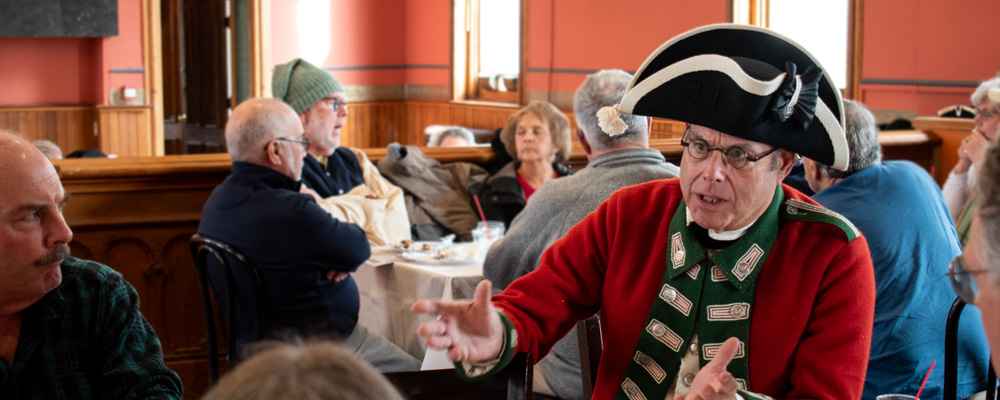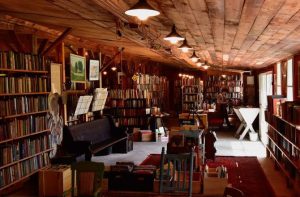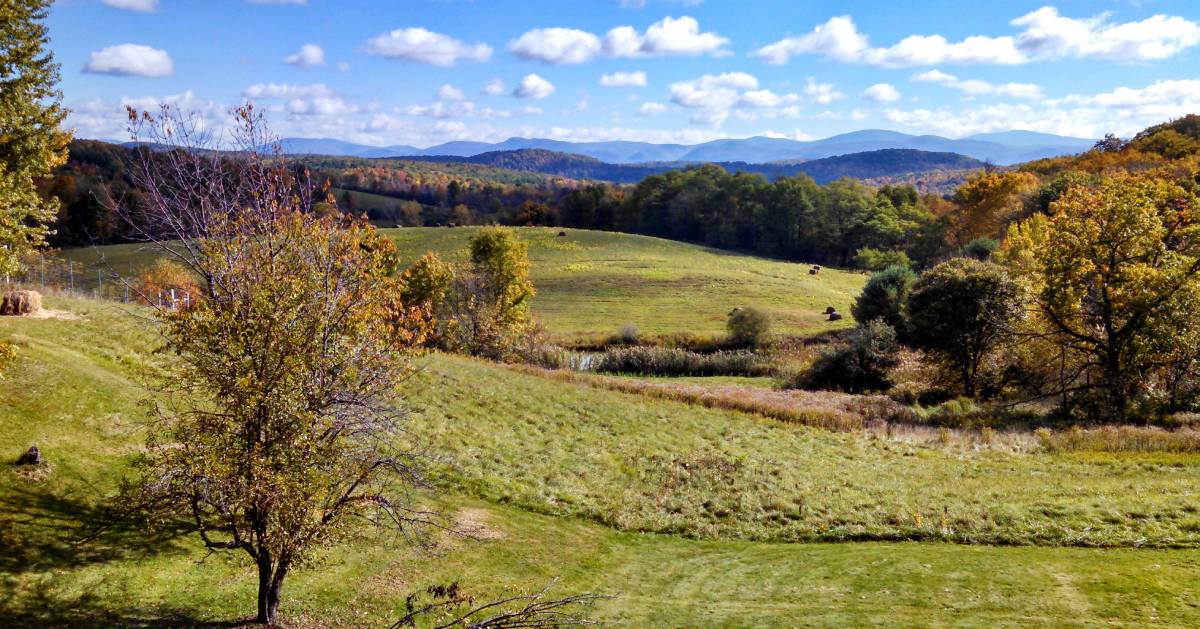Did you know Washington County, NY played a significant role as a way station, helping freedom seekers along the Underground Railroad?
It’s true! With our abundance of local waterways and strong Quaker influences, our small area played a large role in the northeast section of the Underground Railroad.
Many brave local families and individuals helped freedom seekers travel along the network of secret routes and safe houses, stretching from the Southern United States to Canada. Plus, with our great location bordering Vermont, Massachusetts, and Lake Champlain, Washington County quickly became a key transit point for those fleeing slavery.
Several of these important historic sites still stand today, proudly serving as a reminder of the bravery of the enslaved and the Underground Railroad’s conductors. So, let’s connect with the past and walk in the footsteps of history by visiting these significant locations.
Let’s explore the fascinating history of the Underground Railroad and the abolitionist movement in Washington County, NY.
A Brief History of the Underground Railroad in New York State’s North Country
Here in Washington County, the Underground Railroad (UGRR) was organized by a diverse group of people, including Quakers, abolitionists, farm families, and free Black people. They worked together to provide food, shelter, and transportation to people following the Railroad, which connected Washington County to Canada through the North Country.
Check out this map of Underground Railroad routes throughout the state.
The road to freedom was long, and communities across the United States lived in a state of turmoil for decades. Helping people escape slavery through the Underground Railroad was illegal and often incredibly dangerous. Many conductors and freedom seekers were either caught and returned to slavery or tried in court for assisting another’s escape.
Yet despite these risks, the Underground Railroad helped thousands of enslaved people escape to freedom before, during, and after the Civil War.
Want to learn more about the Civil War period? Visit the only original remaining center of its kind in New York: the Hartford Museum & Enlistment Center. Inside, you’ll gain a unique insight into what life was like during that era from the belongings and artifacts of several local men who traveled cross-country to fight for freedom.
The Growing Abolition Movement Attracts Prominent Visitors
Throughout this era, several well-known abolitionists and anti-slavery lecturers toured Northeastern New York, including Samuel Ringgold Ward, E.M.K. Glen, and Frederick Douglass (who is also rumored to have spoken at Hubbard Hall in Salem, NY!) Around the same time, Washington County women were also taking part in the growing women’s suffrage movement.
The Champlain Canal: A Gateway to Freedom in Washington County, NY
Pictured: The Underground Railroad Stone Chair near Fort Ann, NY
Fort Ann, NY
After the Revolutionary War, the near-perfectly level terrain of western Washington County made it the ideal location to build the Champlain Canal, which now connects Lake Champlain to the Hudson River. Once the Canal opened in 1823, Fort Ann, NY became a bustling inland port—and served as an important route for freedom seekers in the years leading up to the Civil War. After all, people can travel much quicker on the water.
Several well-documented sites in Fort Ann, NY are associated with the Underground Railroad:
- The Wray Farm was first built by Colonel George Wray who held 7 enslaved people, according to the first federal census in 1790. By 1850, the farm was a stop along the UGRR.
- The Old Stone House Library, whose attic was used to hide the enslaved until they could be put on a canal boat and smuggled to Canada during the Civil War.
- The Underground Railway Marker/“Stone Chair,” a mysterious stone structure placed in 1841. It’s believed to have been a guidepost for the UGRR, with directional drawings carved into the back.
Fort Edward, NY
On the other hand, local historians say most Underground Railroad conductors avoided Fort Edward as much as possible. Often, slave catchers would ride the trains in and stay in town, so many stayed away from Fort Edward just to be safe.
Want to learn more about Fort Edward’s deep historic roots? Visit the Old Fort House Museum! There, you’ll also learn a bit more about Solomon Northup, a free man born in Washington County, kidnapped in Saratoga County, and sold into slavery. Later, he recorded his experiences, which were turned into the well-known book and movie, “12 Years a Slave.”
A Countryside Safe Haven: The Underground Railroad in Greenwich, NY
Pictured: Signage for the Underground Railroad Walking Tour in Greenwich, NY
Easton, NY
The Old Coach Road (now Route 40) was once an Underground Railroad route through the county, running parallel to the Champlain Canal. Nearby, the rolling hills of Easton, NY were home to several safe houses friendly to freedom seekers. In part, this was due to the area’s large population of Quakers, a religious group who believed all men were equal in the eyes of God.
One of the most notable Easton safe houses was owned by Quakers Job and Esther Wilbur, of whom tales are still told of the lengths they went to to help freedom seekers.
Greenwich, NY
Before it was Greenwich, NY, Union Village played a large role in the Underground Railroad and anti-slavery movement. The route from Troy through Easton to Union Village was a well-trod segment of the “thruway” for the UGRR during the mid-1800s.
In the modern day, you’ll enjoy visiting Mowry Park in Greenwich to explore the Underground Railroad Stops in Union Village. This interactive outdoor experience is available year-round as a self-guided walking tour, a great experience to add to any trip.
Along the way, you’ll see historic residences of well-known abolitionists that doubled as Underground Railroad “stations.” This group includes the gorgeous home of Dr. Hiram Corliss (Washington County’s “stationmaster,”) as well as the very same Free Congregational Church.
For more information, look for the green sign with a QR code next to the Greenwich Town Hall on Academy St.
More Historic Sites Within Washington County, NY Related to Slavery and the Underground Railroad
Pictured: The Ransom Stiles House in Argyle, NY
Argyle, NY
North of Greenwich you’ll find the town of Argyle, NY. There, where the Pleasant Valley complex now stands today on Route 40, once stood the Washington County Poor House. Among many other things, it was believed to have been one of the stations along the Underground Railroad.
In 1824, New York State passed a law that every county had to have a home for “paupers,” a place to care for the poor, the abandoned, and the dependent. Three years later, Washington County opened theirs along the Old Coach Road.
It was home to a broad range of tenants, and all residents were required to work. If they did not have a job, they were given one at either the farm or workshop on-premises. Many children (sometimes abandoned by their families who could not afford them) were indentured to families or sent to orphanages.
On the Grounds of the Washington County Poorhouse
Today, you won’t see any remains of the dormitories or workshops, but the original home for the superintendent still stands along with a few sheds. Nearby, the Washington County Poorhouse Cemetery gives insight into the lives of those relegated to the home. It is believed that from 1827 – 1891, “as many as 600 interments were made in the cemetery without markers. From 1891 to 1930, graves 1-250 were marked with numbers only. 80 stones erected from 1930 to 1964 were marked with names only.”
One of these was a woman fleeing slavery who gave birth to twin boys, Austin and Horace. Interestingly, records show Austin remained in the county, served in the Civil War, and lived to be about 85.
Just up the valley, you’ll find another chapter of the same story.
On Main Street in Argyle proudly stands the Ransom Stiles House, a beautiful brick example of Federal-style architecture built in 1820. But the highly visible building has long-held secret ties to the Underground Railroad.
Owner Ransom Stiles’ well-known abolitionist beliefs (and local accounts of secret tunnels leading from the house to the nearby river) lend evidence to the claim that the merchant often helped freedom seekers escape detection.
Luckily, the building is no longer a private residence – it now serves as a community center. Contact the Stiles House to arrange a tour and learn more about this historic home.
Pictured: The Revolutionary War Cemetery in Salem, NY
Salem, NY
In the southeast part of the county, you’ll find Salem, NY, a charming small town hiding a dark past: it was once home to the largest number of enslaved people in then-Charlotte County, 21. While things changed over time with societal norms and regulations, throughout most of American history, the treatment of people of color has not been equal—even in death.
You’ll see evidence of this at both Evergreen Cemetery and the Revolutionary War Cemetery in Salem, NY.
These beautiful historic cemeteries are home to sections designated for the poor, strangers, and people of color, which have fallen into disrepair over the years. Thankfully, the grounds are now being restored and maintained by modern historians and local residents. Read more about Salem’s forgotten African American heritage here.
Want to know more about Washington County, New York?
Of course, there’s much more to Washington County than our deep historic roots or well-preserved architecture.
For more information about local history, visit our 250th Anniversary page. Furthermore, you may want to check out our unique covered bridges, historical audio tours, and museums. Other top historic experiences include the Rogers Island Visitors Center, Skenesborough Museum, and the Pember Museum Library & Museum.
Need even more trip ideas? Check out our Experience Trails, which include everything from antiques, maple, and fiber to ice cream, hands-on experiences, and haunted places. Or, explore our range of great places to stay.













